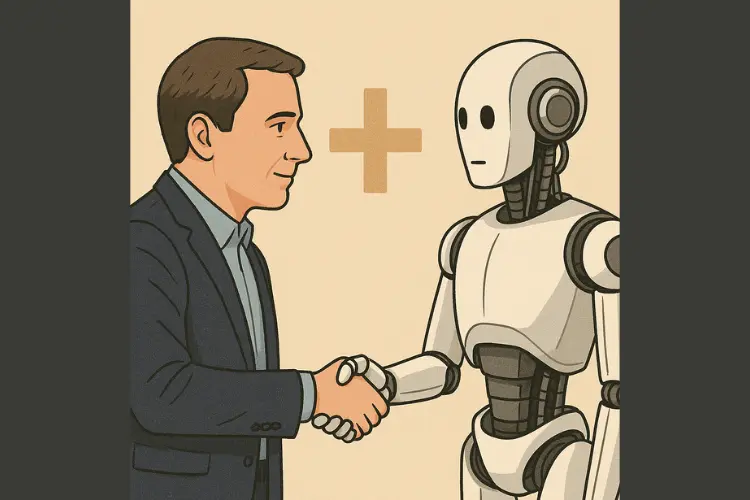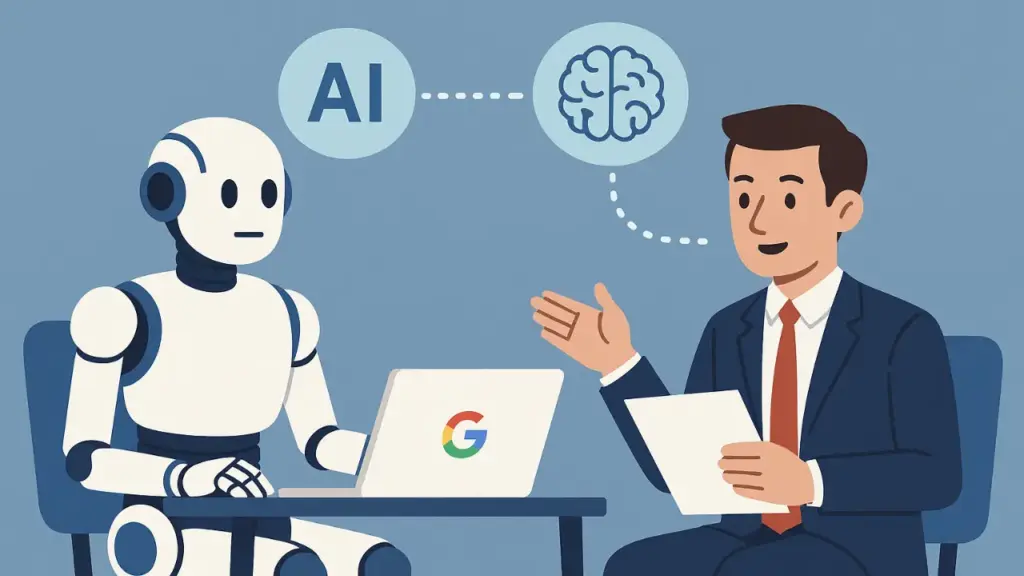Introduction: AI Boom vs. Human Brains
Artificial Intelligence (AI) is rapidly transforming how businesses operate, and tech giants like Google are at the forefront of this revolution. Their aggressive hiring of AI talent signals a new era in tech, one where machine learning engineers, data scientists, and AI researchers are in high demand. But amid the rush to automate, one question still lingers: Is AI ready to replace human intelligence?
Despite the hype, recent insights reveal the limitations of current AI systems. While these tools are fast and efficient, they often lack the creativity, emotional intelligence, and reasoning that humans bring to innovation. This blog explores Google’s AI hiring strategy, highlights the weaknesses of AI agents, and explains why human minds are still central to real progress.
Google’s AI Hiring Spree: What’s Happening?
Google has made headlines for expanding its AI teams. The company is investing heavily in talent to stay competitive in the race for advanced AI solutions. Positions in natural language processing (NLP), generative AI, and reinforcement learning are seeing a surge in demand.
This hiring push aligns with Google’s broader AI mission. From Bard to Gemini, the company wants to lead in both foundational models and applied AI tools. Google is not just recruiting for product development—it’s also building internal research labs and AI ethics teams.
But what does this tell us? Google’s hiring surge isn’t just about machines getting smarter. It’s about hiring humans who can push the boundaries of what AI can do. The very fact that Google needs more people—not fewer—proves one thing: we’re nowhere near replacing human intelligence.
The Limitations of Today’s AI Agents
AI agents have come a long way. They can write emails, summarize documents, generate images, and even simulate conversations. Yet, they remain bound by several core limitations:
Lack of Common Sense
AI tools often fail at tasks that require basic reasoning. For example, they might struggle with understanding sarcasm, contextual humor, or cultural nuances. These are things that humans grasp instinctively.
Dependence on Data
AI doesn’t “think” in the way humans do. It relies on massive datasets and pattern recognition. If the data is biased or incomplete, the output is flawed. There is no real understanding—just probability-driven guesses.
No True Creativity
While AI can remix and reword content, it doesn’t create original thought. True creativity—like inventing a new genre of music or solving a problem in a novel way—is still a human trait. AI mimics, but it doesn’t imagine.
Poor Generalization
AI agents excel in narrow tasks but fail when asked to adapt. A model trained to write poetry might struggle with customer service. In contrast, humans apply knowledge across multiple domains.
Why Human Intelligence Still Leads Innovation
Let’s be clear: AI is a tool, not a thinker.
Humans innovate because we understand purpose, ethics, and emotion. We build with intent, guided by intuition and insight. These are areas where AI falters.
Context Matters
AI lacks the ability to fully grasp context. A human can tailor a message based on a person’s mood, past behavior, or cultural background. AI, however, depends on instructions and historical patterns—it doesn’t “get” the moment.
Ethical Decision-Making
AI systems often reflect the bias in their training data. Humans, however, can make ethical choices, consider long-term consequences, and adapt their behavior based on values. That’s critical in areas like healthcare, education, and law.
Collaborative Thinking
Innovation rarely happens in isolation. Humans brainstorm, debate, and collaborate. These dynamic interactions generate new ideas and refine old ones. AI can assist, but it doesn’t engage in genuine dialogue or negotiation.
Real-World Experience
Unlike AI, humans learn by doing. We can experiment, fail, and grow. This experiential learning process fuels better decision-making and deeper understanding—something algorithms can’t replicate.
Debunking the AGI Hype
Much of the buzz around AI today is tied to AGI, or Artificial General Intelligence—the idea that machines could eventually match or surpass human intelligence in all areas. But the truth is far less dramatic.
AGI Doesn’t Exist Yet
No current AI model, including the most advanced systems like GPT or Gemini, qualifies as AGI. These tools are impressive, but they still depend on narrow parameters and human input. They don’t understand the world—they process it statistically.
Misleading Media Narratives
Movies and headlines often exaggerate AI’s capabilities. The idea of sentient robots or AI overlords sells stories, but it distorts reality. Most AI tools today are task-specific, and even those require constant updates and monitoring.
Expert Opinions Are Grounded
Leading AI researchers warn against overhyping AGI. They stress that intelligence isn’t just computation—it’s judgment, intuition, and experience. These are human qualities developed over years, not lines of code.
Risks of Overreliance
Believing in the myth of AGI can lead to misplaced trust in AI systems. This could result in automation without accountability, especially in sensitive areas like hiring, healthcare, and criminal justice.
The Future: Humans + AI, Not Humans vs. AI
The most realistic and productive path forward isn’t AI versus humans—it’s AI with humans.
Complementary Roles
AI excels at automation, pattern recognition, and scalability. Humans shine in areas like strategy, ethics, and creativity. When combined, they form powerful partnerships. Think of AI as an amplifier for human ability—not a replacement.
Hybrid Work Environments
Companies are already adopting hybrid models where AI handles repetitive tasks while people focus on higher-level thinking. This increases productivity and allows workers to be more strategic and innovative.
Upskilling the Workforce
Rather than fearing job loss, workers should be encouraged to upskill. Learning to work alongside AI—knowing its strengths and weaknesses—can make professionals more valuable in the market.
Ethical Oversight
Human oversight ensures that AI systems remain aligned with societal values. Transparency, fairness, and accountability all require human judgment, especially as AI becomes more integrated into our lives.

Conclusion
Google’s aggressive hiring in AI reveals a simple truth: while technology evolves fast, human intelligence remains the backbone of innovation. AI agents can assist, accelerate, and amplify—but they cannot replace the insight, creativity, and ethical compass of a human mind.
The hype around AGI should be taken with a grain of salt. We are not on the verge of creating machines that think like people. Instead, we’re building tools that need human guidance more than ever.
If businesses and individuals want to thrive in this AI-driven era, the key is collaboration. By embracing human-AI partnerships, we can unlock unprecedented progress—without sacrificing what makes us human.
At StartupHakk, we believe in this balance. The future belongs not to machines or people alone—but to those who know how to bring both together.




